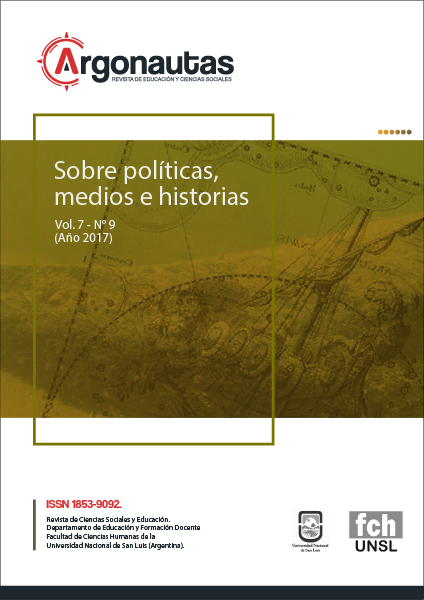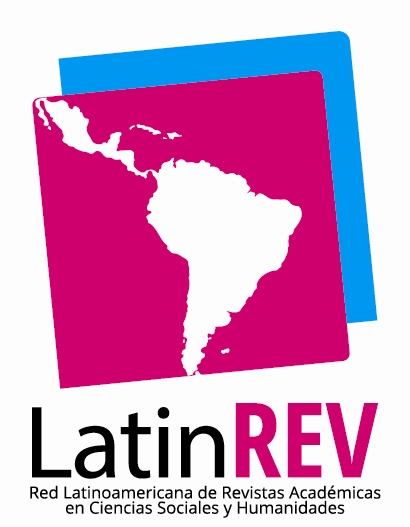Observations on the contemporary era and its influence on child subjectivity
Keywords:
pathologization, child subjectivity, medicalitation, symptom, childhoodAbstract
The present article arises from the work carried out in the research Project PROICO 4-1714 “Practice with children at present” from Facultad de Ciencias Humanas (National University of San Luis) which aims at analyzing the symptoms in the children and adolescents under the framework of Freud´s developments and Lacan´s teachings. Increasingly, children of young age arrive to the consulting room with a diagnosis, a medical treatment and a plan of therapy sessions after visiting a neurologist or a pediatrician. Considering this increase, an analysis of the current era is carried out in order to know how the social conditions have influenced the child subjective constitution, especially in the establishment of symptomatic expressions which have thus led to a growing pathologization and medication of children.
Downloads
References
Alvarenga, B. (2013). “El Otro que no existe y sus comités de ética” Jacques-Alain Miller. Recuperado en: http://nel-mexico.org/index.php?sec=Actividadesinternacionales&file=Actividades-internacionales/Textos-Conferencias/13-06-28_ElisaAlvarenga.html
Arruda Grostein, Sandra (2014). “Niño Amo”, en Hablar el cuerpo. Buenos Aires: Grama Ediciones.
Berkoff, M. 2009 “El niño y la dictadura del objeto en la época”. En Psicoanálisis con Niños y Adolescentes 2. Políticas, prácticas y saberes sobre el niño. Buenos Aires: Grama Ediciones.
Daros, R. W (2015) Tres enfoques sobre el pasaje de la Modernidad a la Posmodernidad. Rosario. Editorial UCEL: Universidad del Centro Educativo Latinoamericano. Enlace: http://www.ucel.edu.ar/upload/libros/DAROS_WR_Tres_enfoques_sobre_el_pasaje_de_la_Modernidad_a_la_Posmodernidad.pdf.
Domínguez, J. G. (2012). “El discurso de la civilización en la época del otro que no existe”. Recuperado en: http://nel-medellin.org/el-discurso-de-la-civilizacion-en-la-epoca-del-otro-queno-existe/
Flacso (2017). Despatologizando Diferencias: en la clínica y en las aulas. Presentación del curso.
Fryd, Adela (2011). “La respuesta a un discurso de violencia”. Recuperado de: http://anomia.blogspot.cl/20111201archive.html
García, Jorge y Zack, Oscar (1990). “Freud-Lacan. Acerca de la Psicosis”. Buenos Aires: Editorial Tekne.
Jerusalinski, A. (2000). “Psicoanalisis en problemas del desarrollo infantil”. Una clinica transdiciplinaria. Buenos Aires: Nueva Visión.
Lacan, J. (1971). “Función y campo de la palabra y el lenguaje en Psicoanálisis”. Escritos 1. Buenos Aires: Siglo XXI.
Lacan, J. (2015). “Subversión del sujeto y dialéctica del deseo en el inconsciente freudiano”. Escritos 2. Buenos Aires: Siglo XXI editores.
Loray, A. (2016). “La función del padre”. Recuperado de: https://www.kennedy.edu.ar/wpcontent/uploads/bsk-pdf-manager/2016-09-19_151.pdf
Gross, M. N. y Diaz Redondo, C. (2015). “El análisis en tiempos de Starbucks”. Recuperado en: http://revistadesvios.unsam.edu.ar/el-analisis-en-tiempos-de-starbucks/
Miller, J. A. (2004). “Una fantasía”. Revista Lacaniana N°3. Pag. 15. Buenos Aires.
Pelliza, M. (2014). “Niños Amos”, en Hablar con el cuerpo. Buenos Aires: Grama Ediciones.
Vera Ramos, R. (2017). “Sin inconsciente, ¿Qué es el síntoma?, XVII Jornadas Anuales de la EOL. Recuperado en: http://www.eol.org.ar/template.asp?Sec=jornadas&SubSec=jornadas_eol&File=jornadas_eol/017/boletines/005.html
Vera Ramos, R. (2017). Sin inconsciente, ¿Qué del síntoma?, XVII Jornadas Anuales de la EOL. http://www.eol.org.ar/template.asp?Sec=jornadas&SubSec=jornadas_eol&File=jornadas_eol/017/boletines/005.html
Downloads
Published
Issue
Section
ARK
License
Copyright (c) 2017 Constanza Gómez, Eliana De Prado

This work is licensed under a Creative Commons Attribution 4.0 International License.






